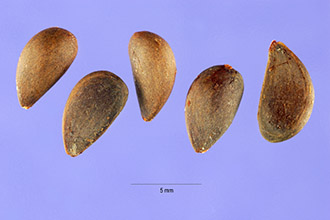Southern Crab Apple
Scientific Name: Malus angustifolia (Aiton) Michx.

| General Information | |
|---|---|
| Usda Symbol | MAAN3 |
| Group | Dicot |
| Life Cycle | Perennial |
| Growth Habits | ShrubTree, |
| Native Locations | MAAN3 |
Plant Guide
Use soil moisture sensors to measure the soil moisture of Southern Crab Apple.
Fact Sheet
Alternate Names
narrow-leaf crab apple
Uses
Wildlife: Fruits are eaten by whitetail deer, bobwhites, grouse, pheasants, rabbits, squirrels, opossums, raccoons, skunks, foxes and many small birds. Its fruit is occasionally used for jelly, preserves and cider. Timber: Its hard, heavy wood makes excellent tool handle, levers, and small wooden ware articles. Recreation and Beautification: Typically a weed tree but quite attractive in a native setting.
Status
Please consult the PLANTS Web site and your State Department of Natural Resources for this plant’s current status (e.g. threatened or endangered species, state noxious status, and wetland indicator values).
Description
Malus angustifolia Michx., Southern crab apple is commonly found from southern Virginia south to northern Florida, west to Louisiana, and north to Arkansas. Southern crabapple is a shrub or small tree, 20 to 30 feet in height, with a short trunk 8 to 10 inches in diameter; with rigid, spreading branches forming a broad, rounded, open crown. Leaves are elliptical or oblong, blunt at tip, wavy sawtoothed, hairy when young; dull green above, paler underneath. Bark is gray or brown; furrowed into narrow scaly ridges. Fruit ¾-1” in diameter, like small apples; yellow-green, sour with long stalk.
Adaptation and Distribution
Distribution
Distribution
Southern crabapple grows best in well drained, moist and acid soils (pH 5.0 – 6.5) of valleys and lower slopes, stream banks, borders of woodlands, fence rows, and old fields in the southeast, often forming thickets. Southern crab apple is distributed throughout the Southeast. For a current distribution map, please consult the Plant Profile page for this species on the PLANTS Website. Establishment © William S. Justice Smithsonian Institution @USDA NRCS PLANTS Southern crabapple is mainly propagated by grafting using a whip graft, budding or from softwood cutting.
Management
Southern crabapple should be planted in full sun to enhance development of flowers and fruit, It generally requires little pruning, Use soil moisture sensors to measure the soil moisture of Southern Crab Apple., Pruning is generally done to remove sucker growth, open up the center of the plant to light and air, to cut undesirable branches and shape the tree, If planted with redcedars (Juniperus virginiana, Juniperus scopulorum), keep a minimum distance of 500 ft to prevent spread of cedar apple rust,
